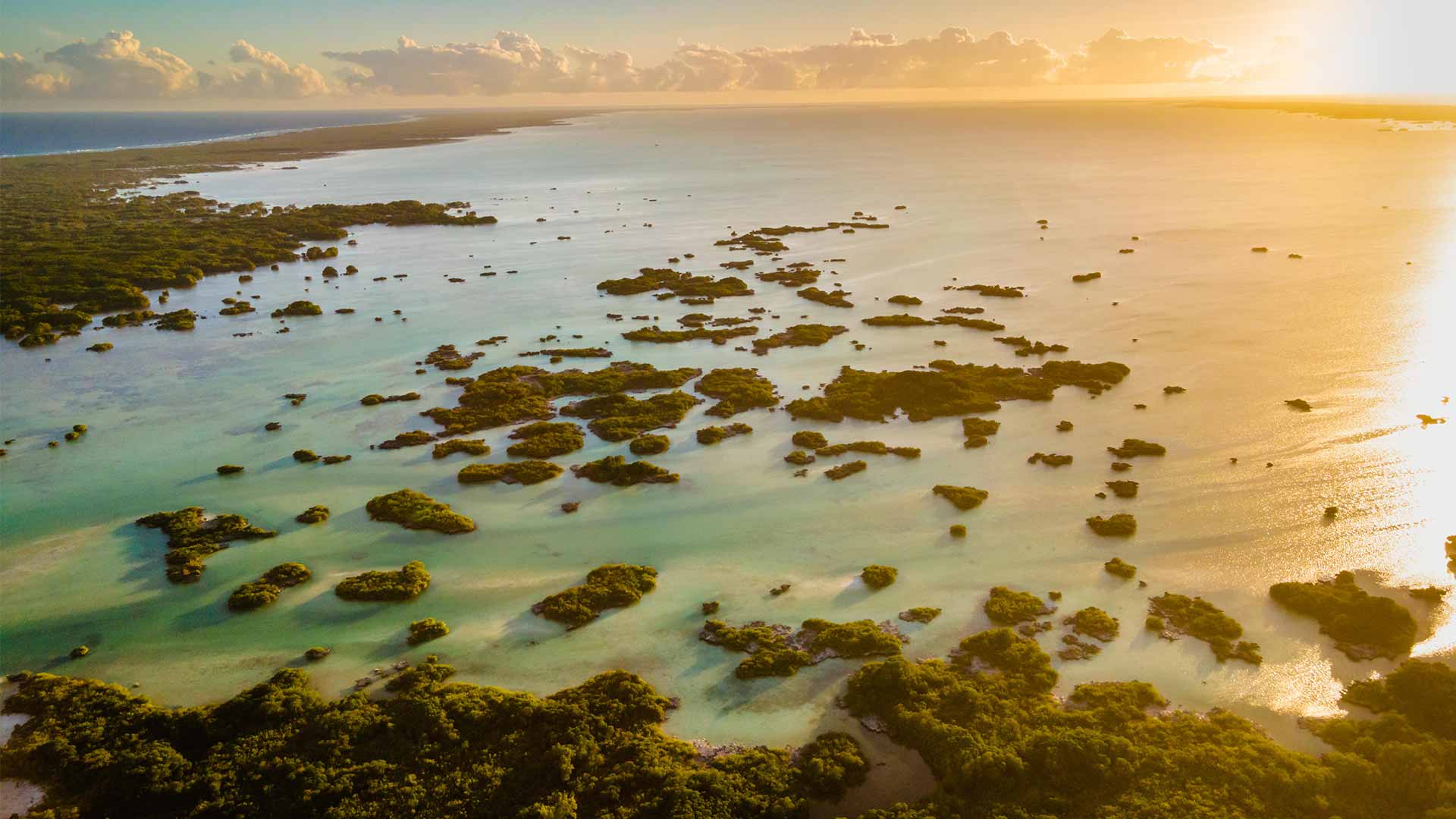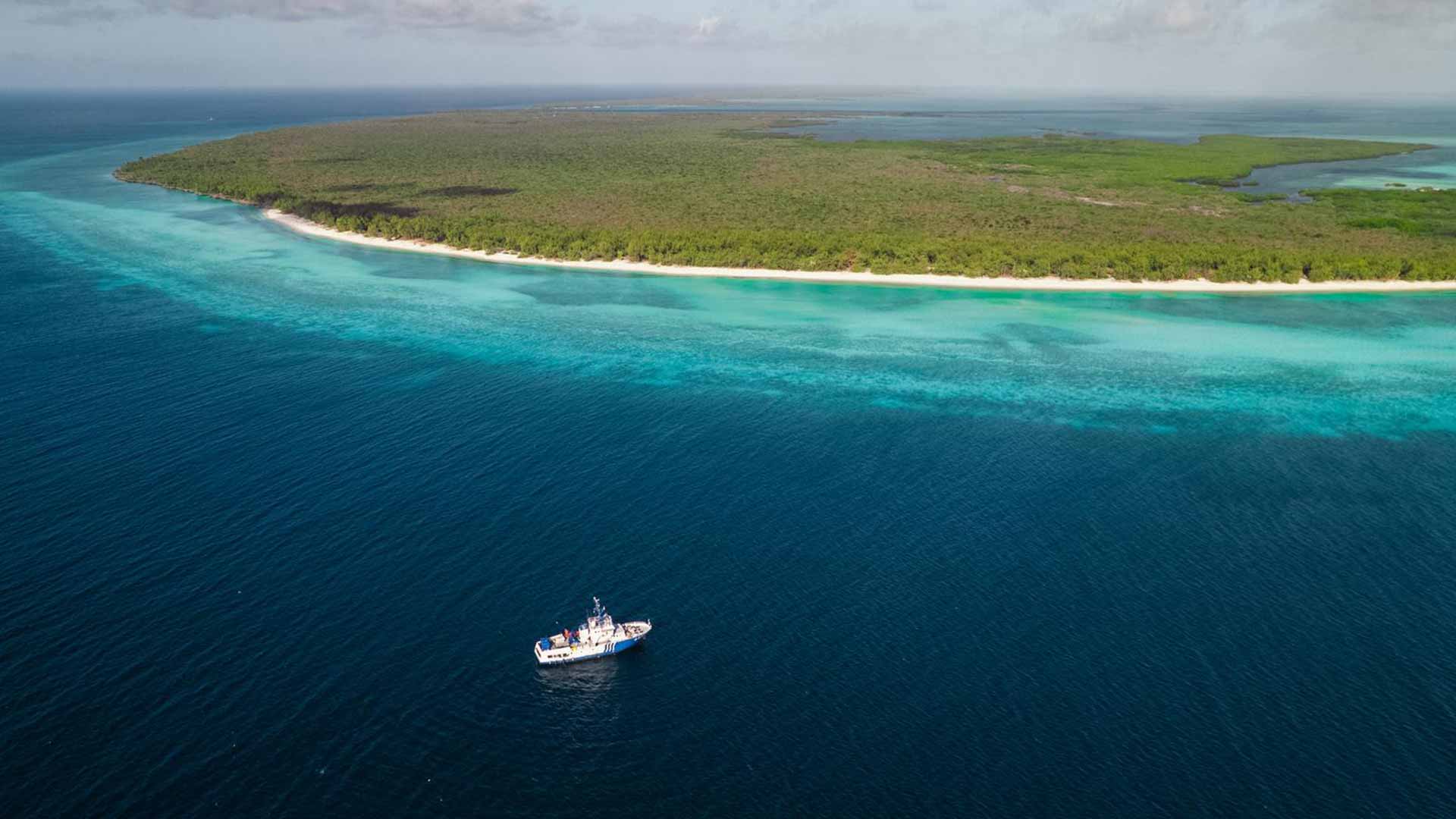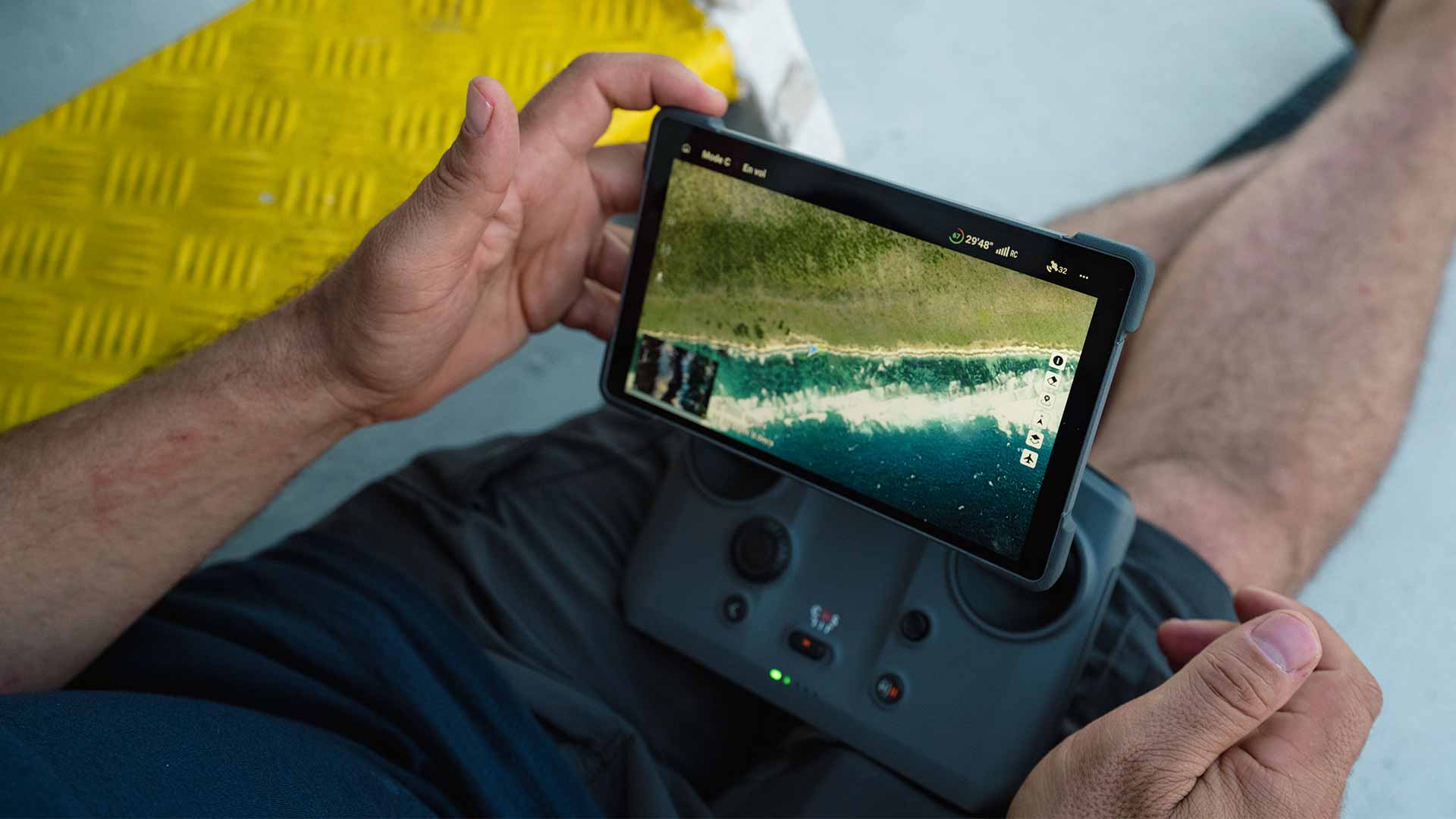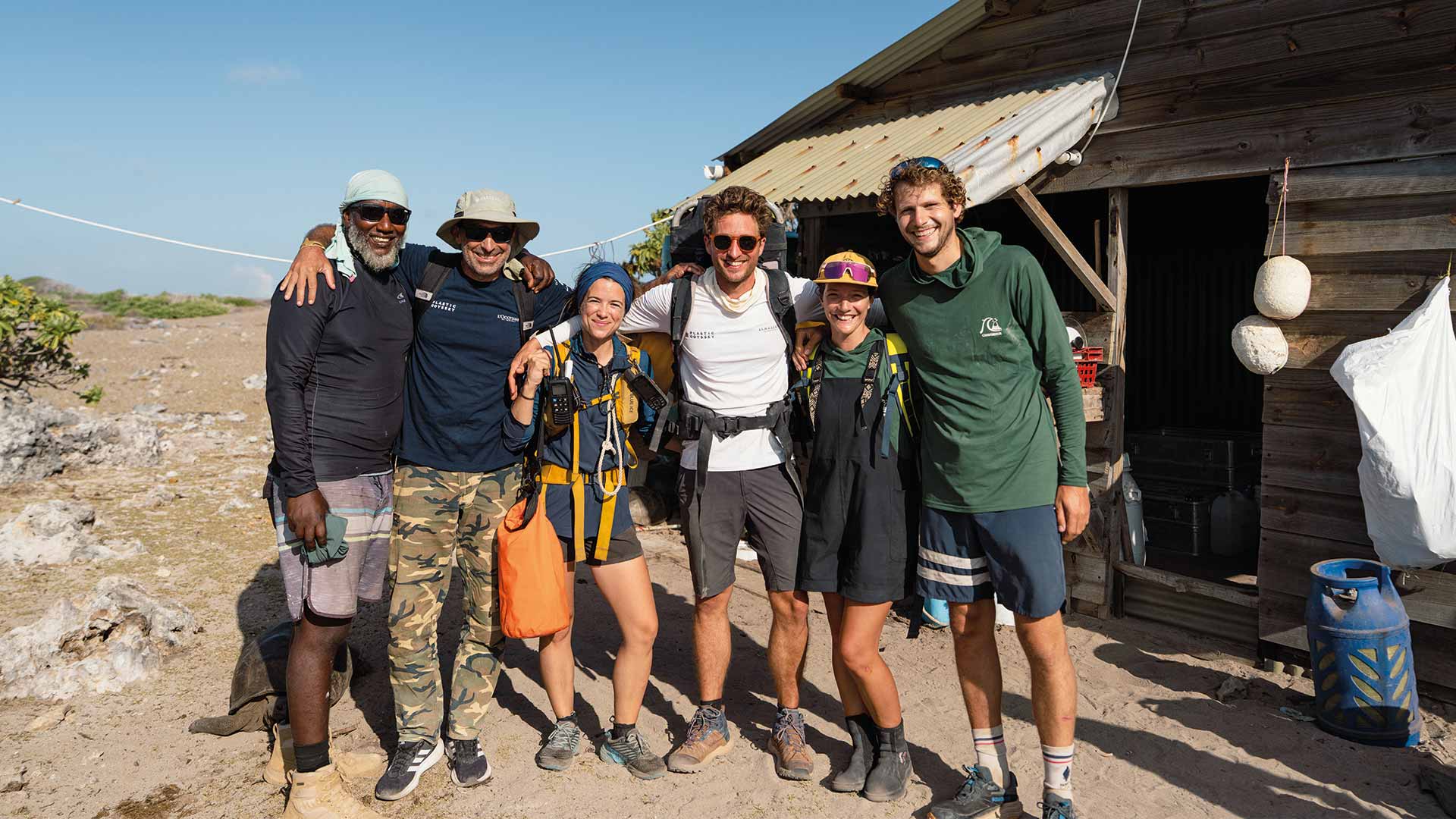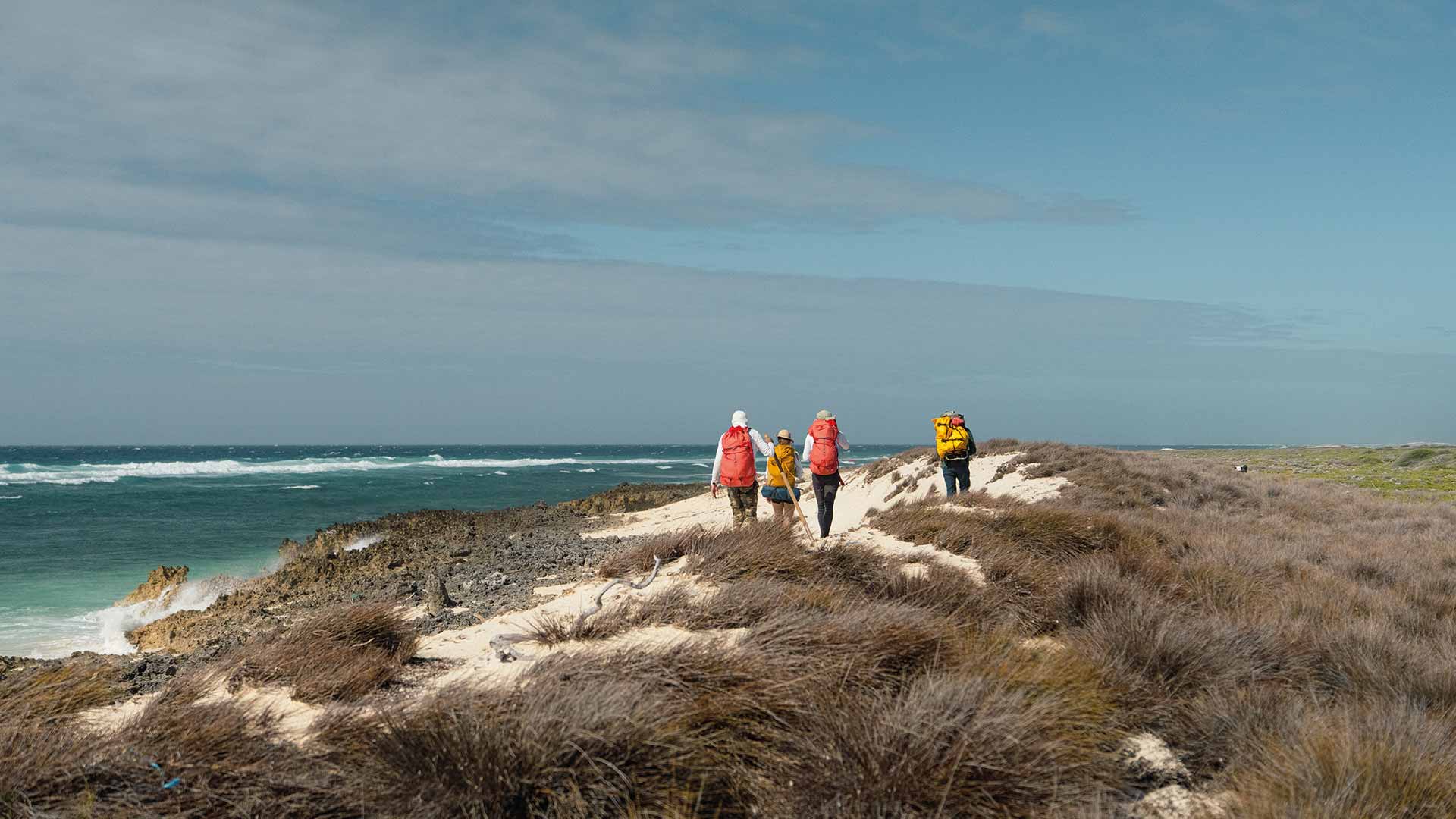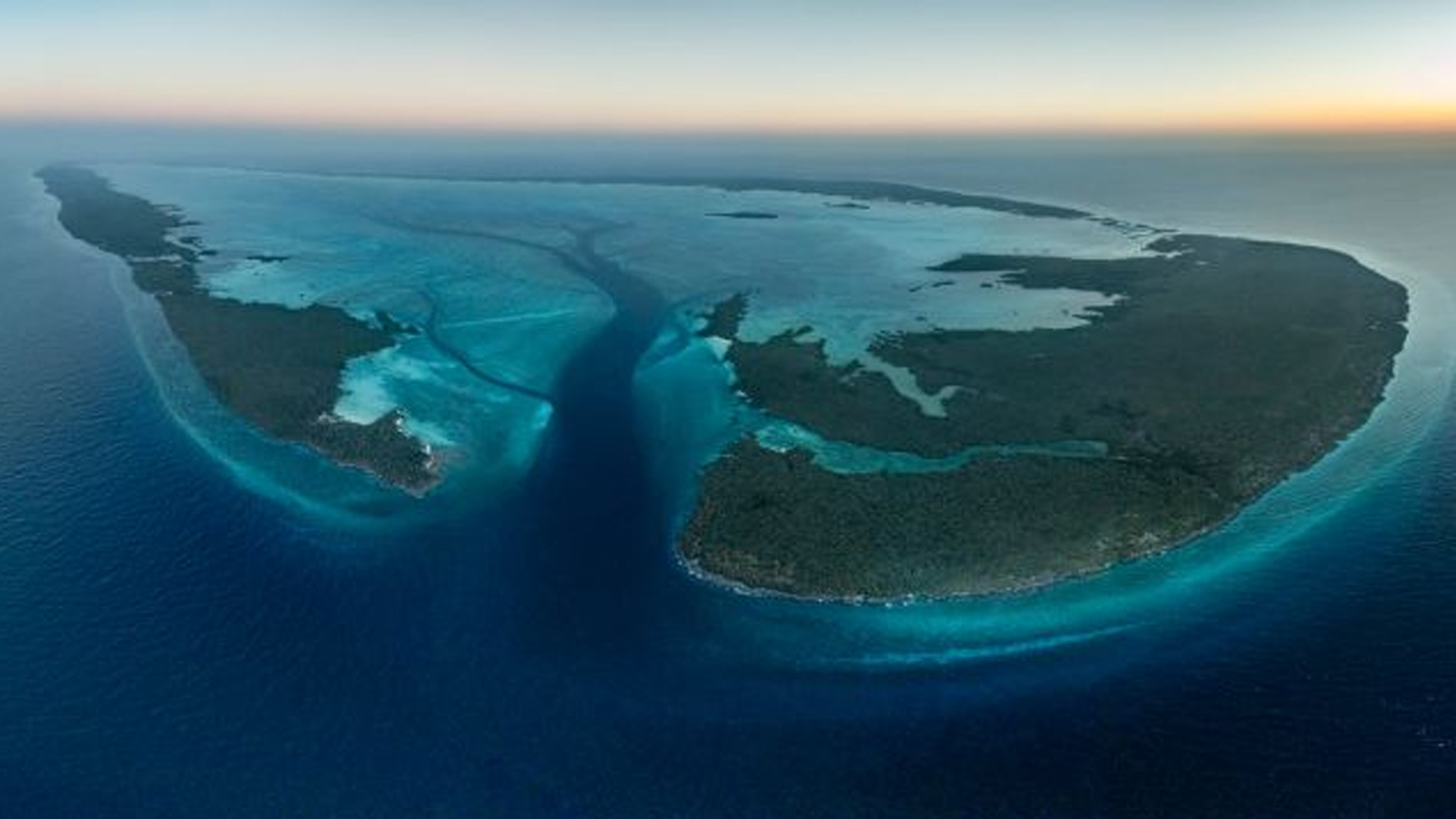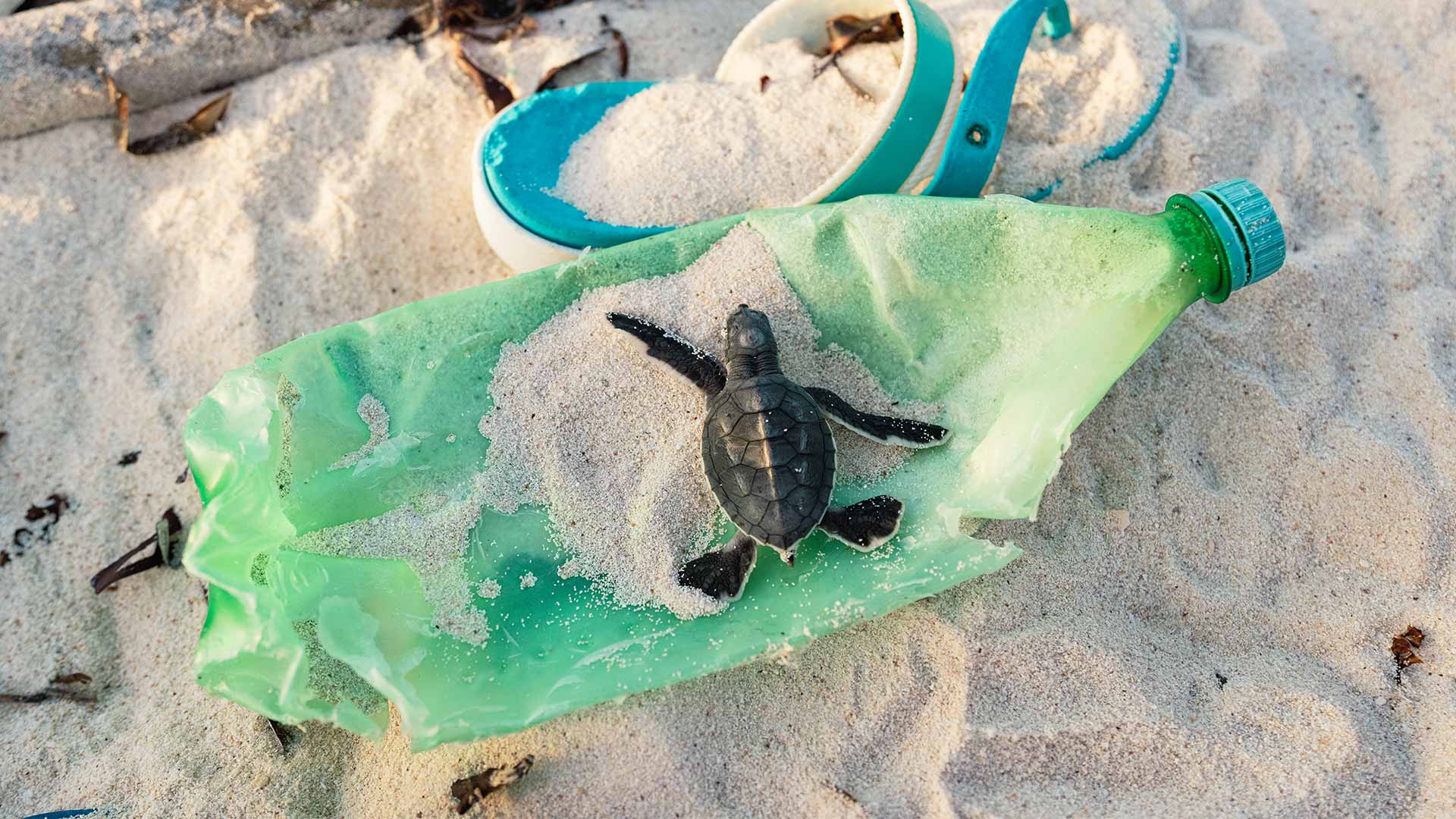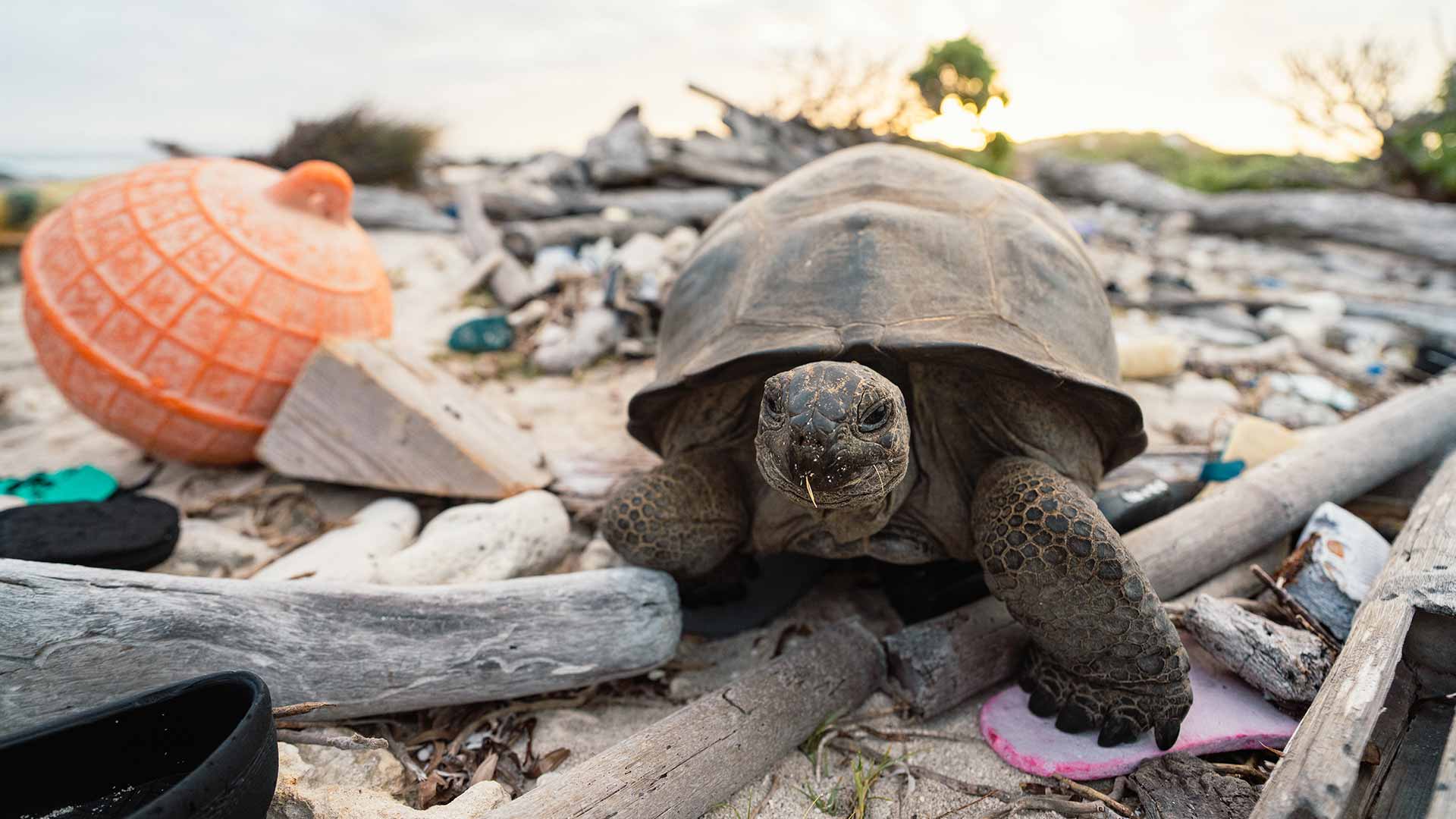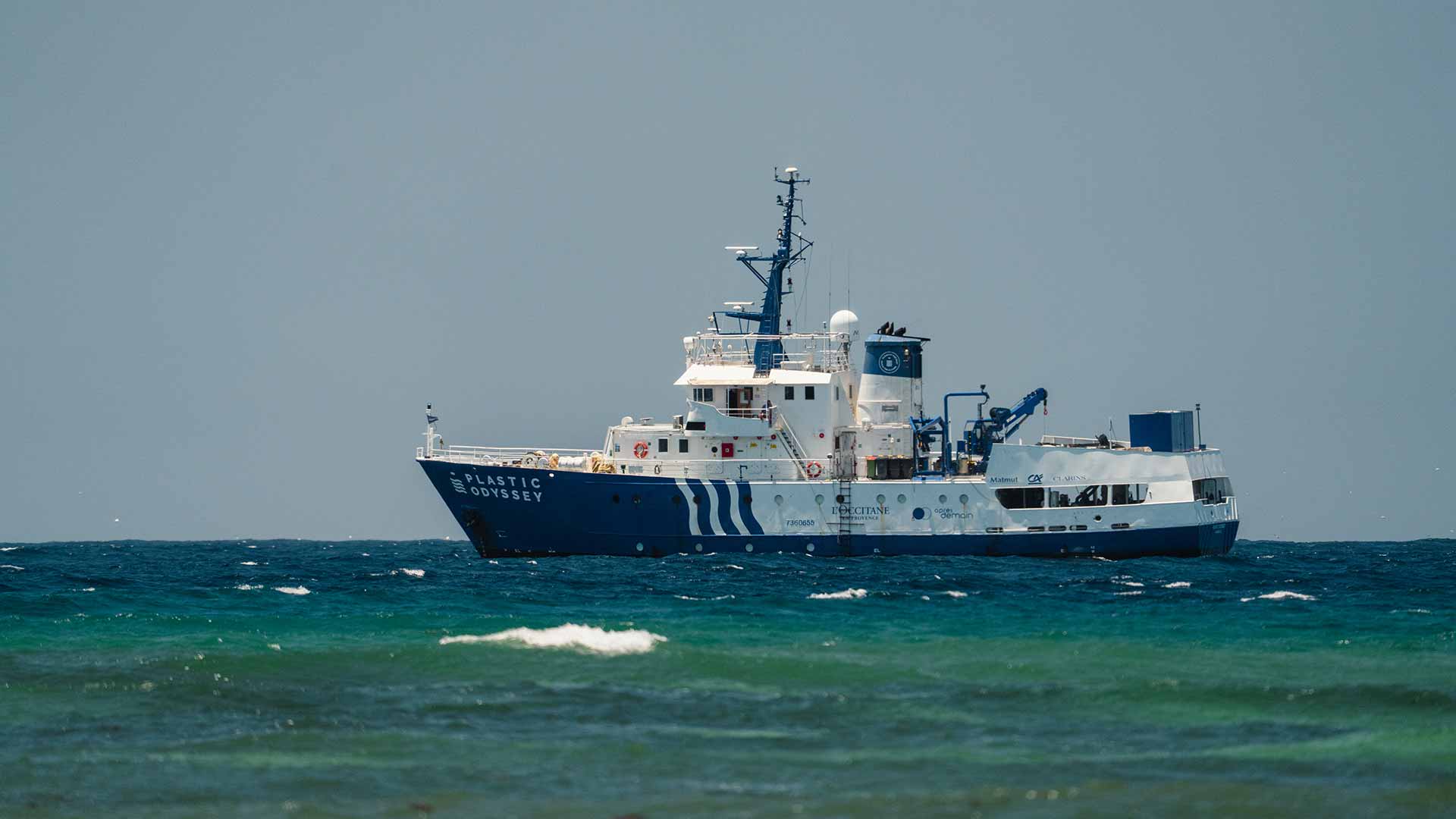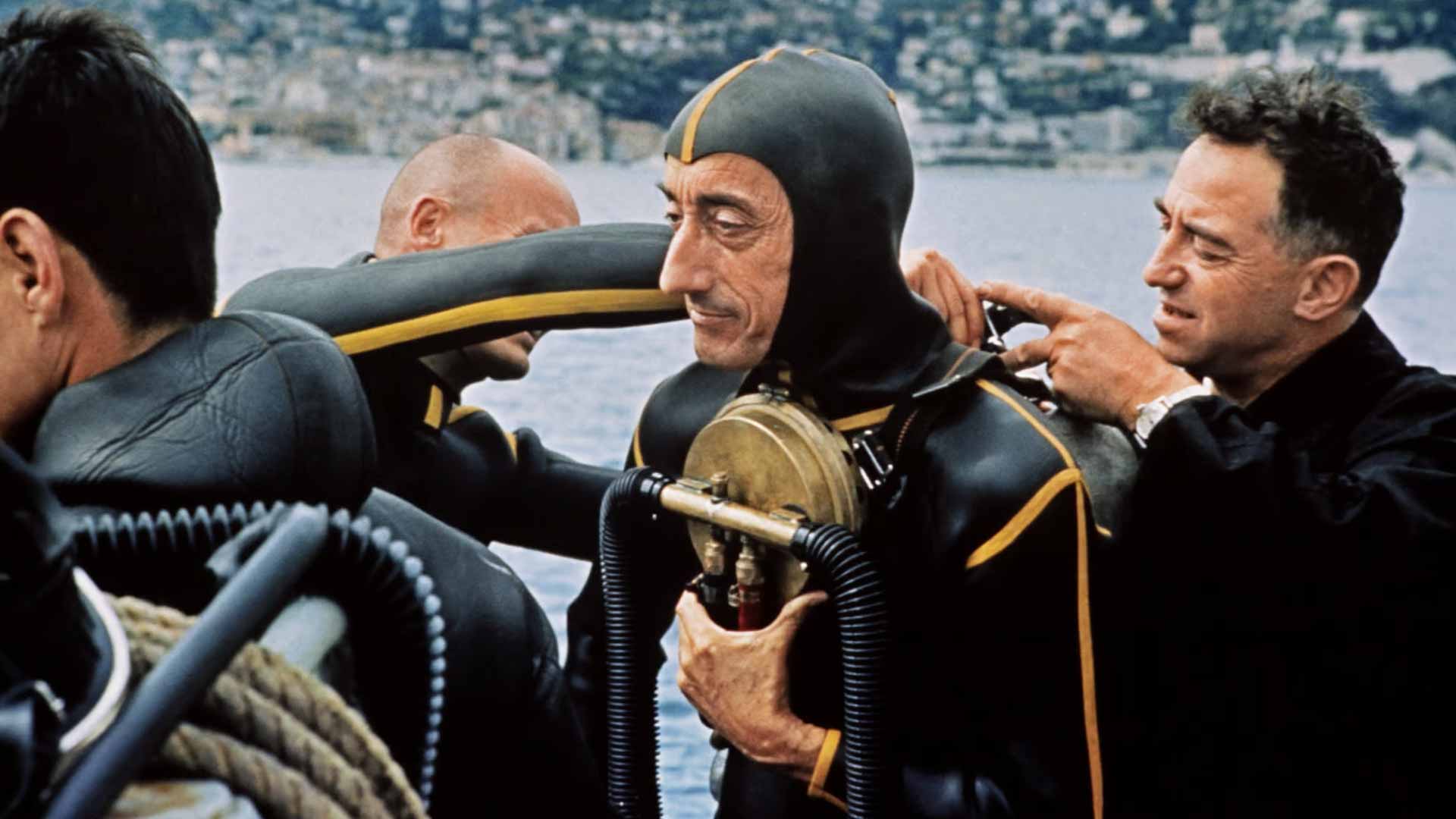
Day 2: “Aldabra is a paradise bristling against the invasion of man”
Aldabra has always inspired awe among those lucky enough to reach it. Yet its greatest defender was Commander Jacques-Yves Cousteau (1910–1997). Beyond revealing Aldabra’s coral beauty to the world, he made it his mission to protect it from the various forms of harm caused by humankind.
The crew of Plastic Odyssey woke up on Monday, October 6, beneath a grey sky and scattered showers. In the distance, two arcs of a rainbow appeared to starboard, a symbol of hope, peace, and harmony in many cultures. After the sea turtle spotted the day before in Victoria’s harbor, it seemed the gods of the Indian Ocean were multiplying their signs of goodwill. Sailing steadily at about seven knots, the vessel now kept her course at 230 degrees, heading for Aldabra.
This Seychellois atoll, where Plastic Odyssey is to carry out a ten-day reconnaissance mission before later attempting to extract 513 tons of plastic waste, is made up of four islands: Malabar, Grande Terre, Polymnie, and Picard. Narrow channels separate them, forming an immense oval lagoon glowing emerald green.
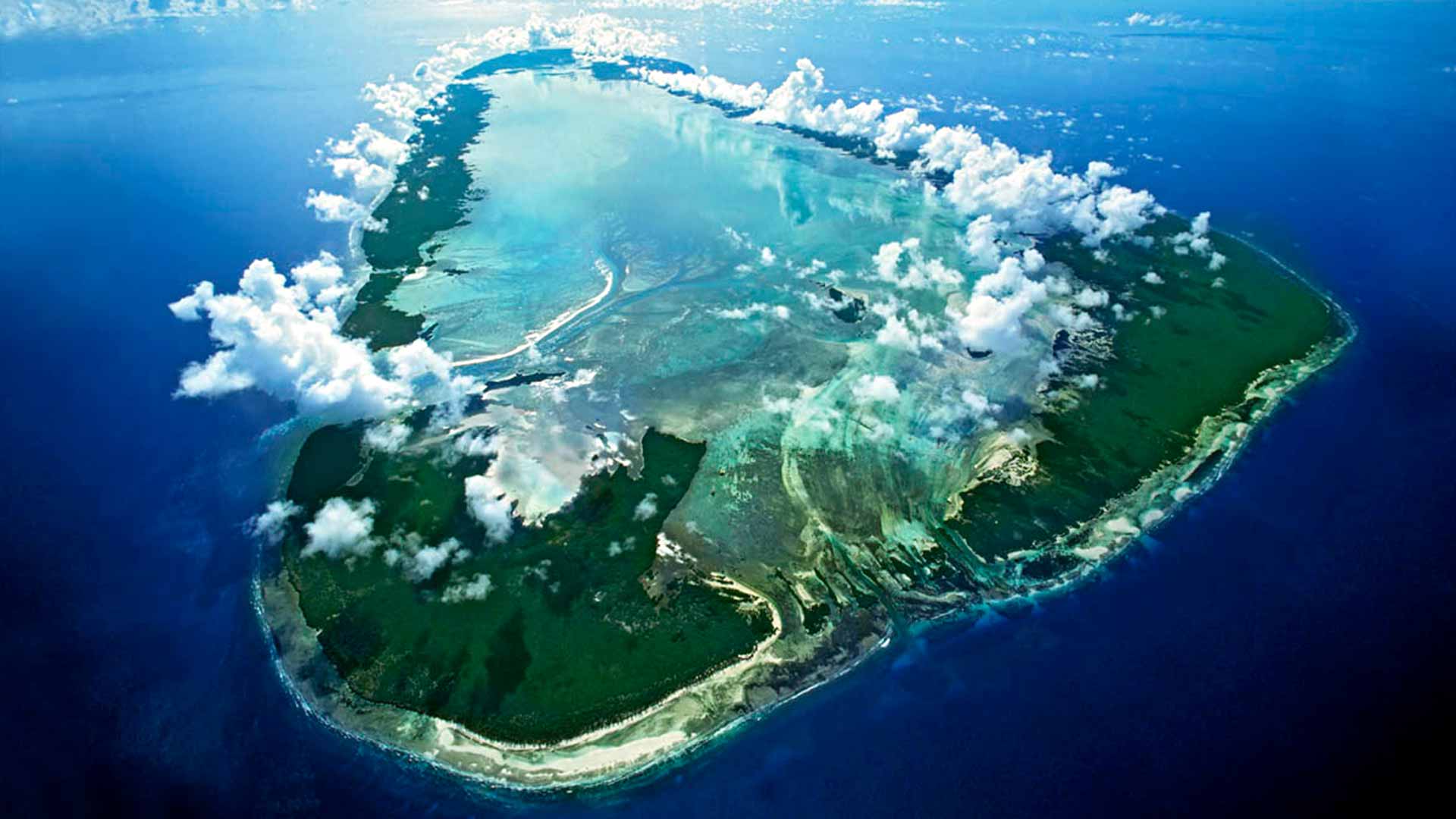
Aldabra has always inspired awe among those lucky enough to reach it. In the 19th century, the naturalist Charles Darwin (1809–1882) visited and returned convinced of the need to protect the atoll’s biodiversity, a natural paradise and sanctuary for tens of thousands of giant tortoises. Yet its greatest defender was Commander Jacques-Yves Cousteau (1910–1997). Beyond revealing Aldabra’s coral beauty to the world, he made it his mission to protect it from the various forms of harm caused by humankind.
The explorer first visited the atoll in 1954, an expedition recounted in two books. The first, written by Gustave Cherbonnier (1909–1995), a biologist from the Muséum d’Histoire Naturelle in Paris who joined the Calypso in Doha, is rich with detail and anecdotes. Cherbonnier was enthralled by Aldabra’s wild abundance: “On May 9, Aldabra rose in a dawn of purple and gold,” he wrote in Aldabra, the Island of Giant Tortoises (Gedalge Ed.). “Aldabra the Enchantress, where for five weeks I would forget the world and its troubles, mankind and its petty quarrels. Five weeks of pure bliss.”
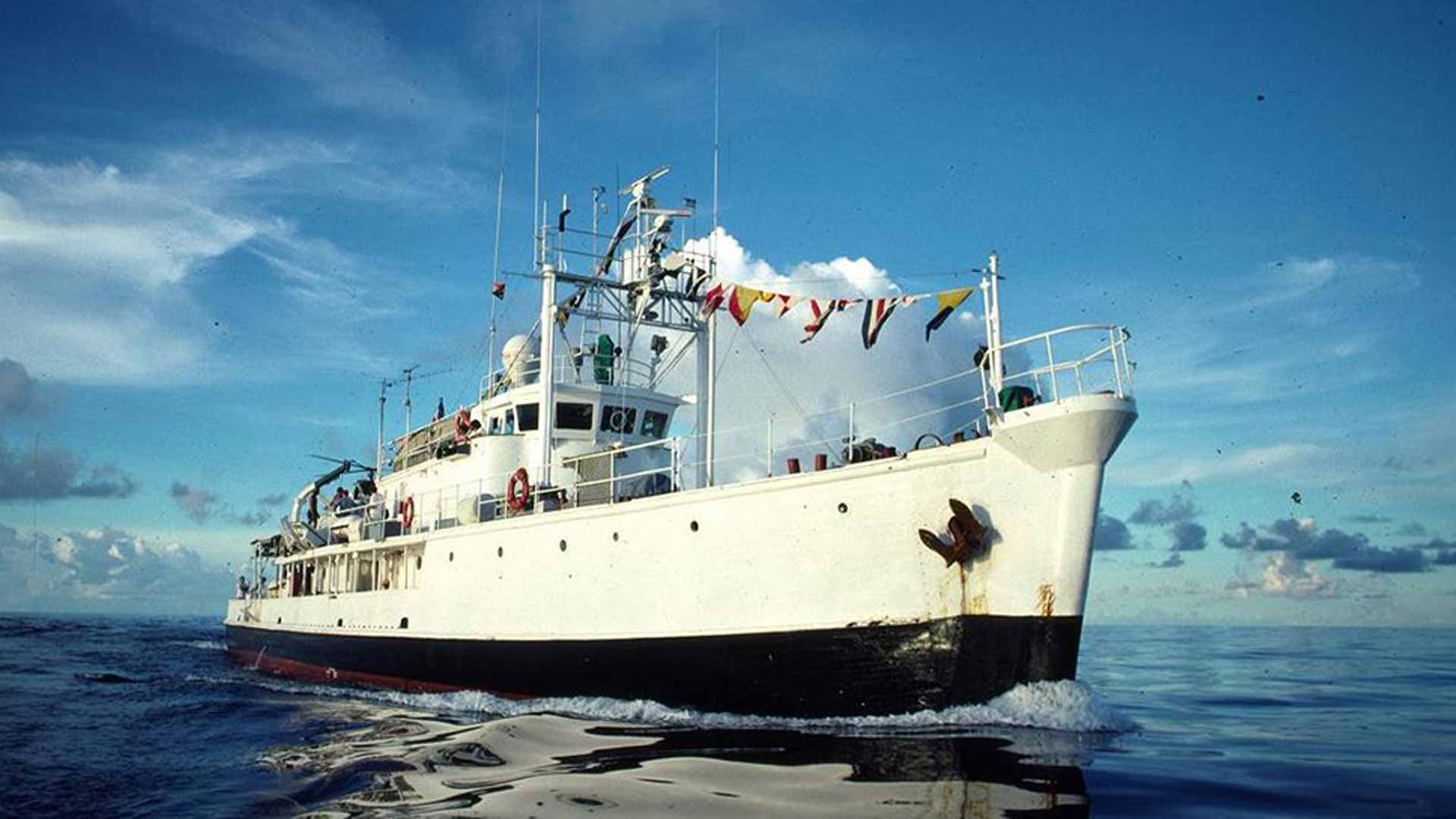
The second work, Aldabra, Coral Sanctuary (IMA Ed.), was written by Cousteau himself, with photographs pasted directly onto the pages. Although the red-capped explorer also described his other stops in Mahé (Seychelles) and Yemen, Aldabra left a deep impression on him: “After wonderful and fruitful weeks, we leave Aldabra with melancholy,” he wrote in his conclusion. “Beyond the biologists’ remarkable collections, we found there an atmosphere both harsh and endearing. This paradise of birds, tortoises, and fish bristles against the invasion of man. Yet this hostility is only a passive defense: nature here has renounced its usual weapons, snakes, scorpions, venomous spiders, all unknown in this place… I shall make an effort for Aldabra.”
Cousteau’s idea was bold: to lease the atoll, then under the British flag, and establish a permanent scientific base there to shield it from industrial projects threatening its fragile ecosystem. Among those plans were fish smokehouses, large-scale fishing operations, turtle meat salting, and mangrove wood exploitation for packaging cardboard.
As Cherbonnier later recounted, “Cousteau’s beautiful project never came to pass. Yet the Captain tried everything, even meeting with Churchill in London, which, by the way, is no small tribute from one great man to another, a pioneer of diving and underwater cinema. All Cousteau managed to secure was the designation of Picard Island as a nature reserve. Which, all things considered, was already quite an achievement.” Since then, the Seychelles have gained independence (in 1976), and Aldabra is now managed by the Seychelles Islands Foundation (SIF), which issues, sparingly, the coveted clearances required to set foot on the island.
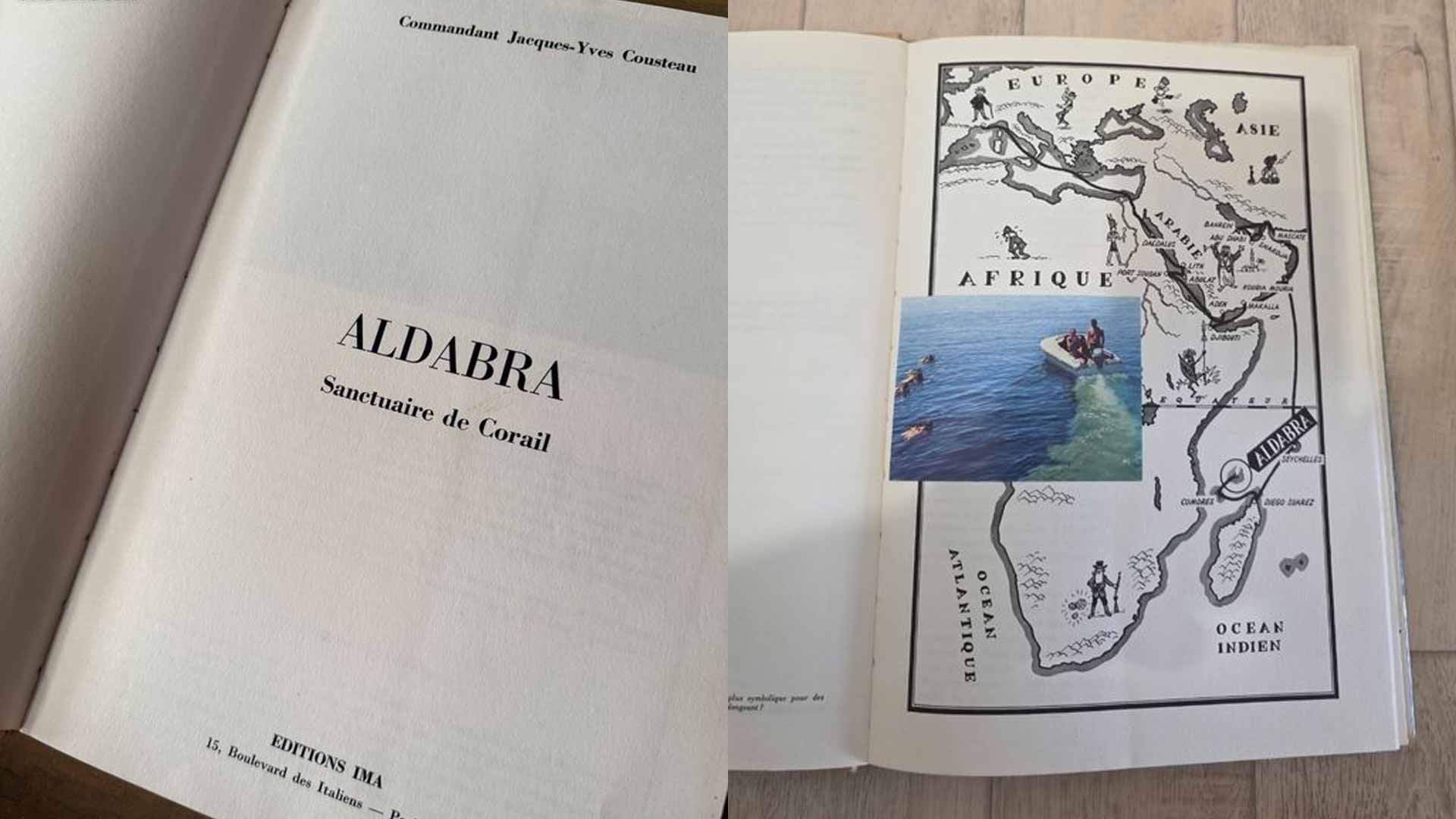
It was noon aboard Plastic Odyssey. Meals are vegetarian, but freshly caught fish may be shared. Today, Aodren, the cook, prepared the dolphinfish caught the day before by Germain, head of the onboard workshop. It was exquisite.
During meals or in the cabins, Cousteau’s name often came up in conversation since the ship’s departure from Victoria. Alexis Rosenfeld, a professional diver who boarded in Mahé with his daughter Maluha and cameraman François, knew the man in the red cap personally. “I had the chance to take part in the Commander’s final expedition in the mid-1990s,” he recalled. “It was in Madagascar, aboard the Alcyone, his oceanographic vessel. I was 22, and it felt surreal to live alongside the very man who had made me dream throughout my childhood… We never discussed Aldabra directly, but the name often came up, as we were so close to the atoll.”
In the early afternoon, on the bridge, Lena, the first officer, stood watch. “Dolphins to port!” she called out. “And four gannets flying just ahead of the bow!” The sight was majestic, a dance of seabirds across the blue sky.
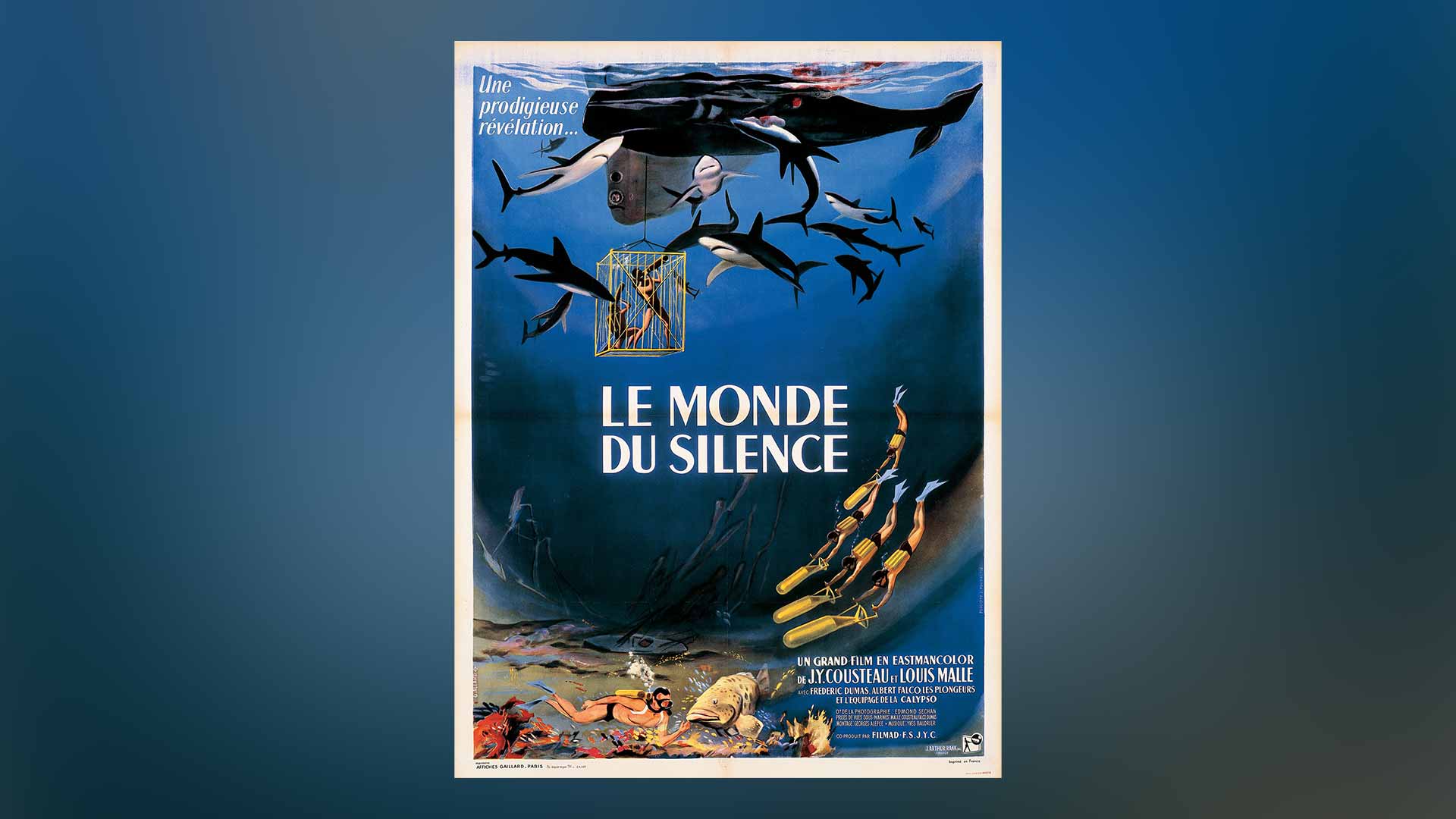
The day could only end one way: with a screening of The Silent World, Cousteau’s iconic film. At 9 p.m., as the sea began to swell, the conference room filled for the viewing. Yet nearly seventy years later, some sequences jar the modern eye: dynamite fishing, shark slaughter, rough handling of giant tortoises. Strangely, Aldabra is not mentioned in The Silent World. Still, the images, filmed by Louis Malle, later the director of Au Revoir les Enfants (1987), brought the entire Plastic Odyssey crew closer to the atoll they had been dreaming of. In two days, they will arrive. Excitement is building.
Author: Pierre Lepidi, Senior Reporter at Le Monde
Other articles
Day 1: “Aldabra, here we go!”
After spending a few hours at anchor off the Seychelles capital, the vessel set sail in the early afternoon. "Aldabra, here we go!" cheered Pierre-Louis, known to all as "Pilou", the second officer, as he sounded the ship’s horn. Under a cloudless sky, Plastic Odyssey first headed north along the coast of Mahé. Slowly, the island faded into the distance....
Day 2: “Aldabra is a paradise bristling against the invasion of man”
Aldabra has always inspired awe among those lucky enough to reach it. Yet its greatest defender was Commander Jacques-Yves Cousteau (1910–1997). Beyond revealing Aldabra’s coral beauty to the world, he made it his mission to protect it from the various forms of harm caused by humankind....
Day 3: Final preparations before landing on Aldabra
The vessel now moved to the rhythm of landing preparations, and nothing was left to chance. To protect biodiversity, the Seychelles Islands Foundation (SIF), the body responsible for regulating the atoll and issuing permits, requires that all equipment taken ashore on Picard Island be thoroughly cleaned of dust, sand, seeds, and soil....
Day 4: Aldabra, seen from the sky
One of Plastic Odyssey’s missions is to map the areas where 513 tons of plastic waste were recorded during a scientific expedition in 2020. Driven by the trade winds, these piles have accumulated along the southern and eastern shores of the atoll, over roughly fifty kilometers. Some of these zones, as satellite images show, are extremely difficult to reach....
Day 5: Aldabra, the challenge of water
The heat was oppressive, almost suffocating. The first challenge was to get the seawater desalination unit running to rehydrate. "Water is life. The first priority in any survival situation is always access to water," explained Thibault, engineer aboard Plastic Odyssey. Since there are no natural sources on Aldabra, the scientific team relies exclusively on filtered rainwater for their daily needs....
Day 6: East of Aldabra, a lunar landscape swept by the trade winds
After waking, the Plastic Odyssey team decided to watch the sunrise from the top of the dune beside the DJL camp. Rising about twenty meters high, it is the atoll’s highest point. From up there, nature came alive in calm and color. Aldabra stretched out in every direction. The first light of day glowed orange and gold, as if the island were trying to seduce us....
Day 7: Aldabra does not give itself away, It must be earned
To confront Aldabra is to endure the island’s harsh conditions, but every effort is rewarded. A meeting with a tortoise, a sunset, a breathtaking landscape, the island gives back to those who care for it. But it never gives itself easily. It must be earned....
Day 8: Aldabra asks to be protected
Night had fallen. A dozen tortoises surrounded us. Almost naively, I asked Francis, the island's manager, what message Aldabra might want to send to the world. "It would be a cry from the heart," he said. "I am unique. Protect me."...
Day 9: Life Among Aldabra’s Giant Tortoises
The sea turtle reaches the plastic debris: she skirts a fishing buoy, crushes a plastic bottle. Farther on, a tire, a few jerrycans, some sandals. Watching her struggle through this apocalyptic landscape feels unreal, deeply moving....
Day 10: Mission accomplished for Plastic Odyssey on Aldabra
The Plastic Odyssey is expected off Dune Jean-Louis at 10 a.m. to test the extraction of half a ton of plastic waste using a floating platform made of jerrycans. The barge will shuttle between the vessel and the shore. But the sea is rough, and the wind is strong. Will the extraction be possible? Tension and uncertainty fill the air....
